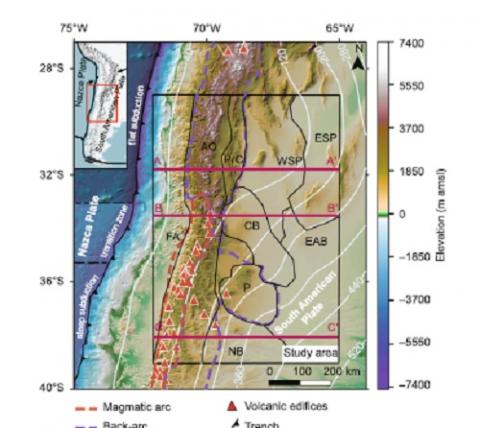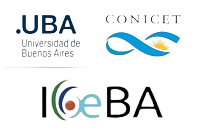C. Rodriguez Piceda, M. Scheck-Wenderoth, J. Bott, M. L. Gomez Dacal, M. Cacace, M. Pons, C. B. Prezzi, and M. R. Strecker
2 022
Lithosphere Volume 2022
In an ocean-continent subduction zone, the assessment of the lithospheric thermal state is essential to determine the controls of the deformation within the upper plate and the dip angle of the subducting lithosphere. In this study, we evaluate the degree of influence of both the configuration of the upper plate (i.e., thickness and composition of the rock units) and variations of the subduction angle on the lithospheric thermal field of the southern Central Andes (29°–39°S). Here, the subduction angle increases from subhorizontal (5°) north of 33°S to steep (~30°) in the south. We derived the 3D temperature and heat flow distribution of the lithosphere in the southern Central Andes considering conversion of S wave tomography to temperatures together with steady-state conductive thermal modeling. We found that the orogen is overall warmer than the forearc and the foreland and that the lithosphere of the northern part of the foreland appears colder than its southern counterpart. Sedimentary blanketing and the thickness of the radiogenic crust exert the main control on the shallow thermal field (<50 km depth). Specific conditions are present where the oceanic slab is relatively shallow (<85 km depth) and the radiogenic crust is thin. This configuration results in relatively colder temperatures compared to regions where the radiogenic crust is thick and the slab is steep. At depths >50 km, the temperatures of the overriding plate are mainly controlled by the mantle heat input and the subduction angle. The thermal field of the upper plate likely preserves the flat subduction angle and influences the spatial distribution of shortening.

